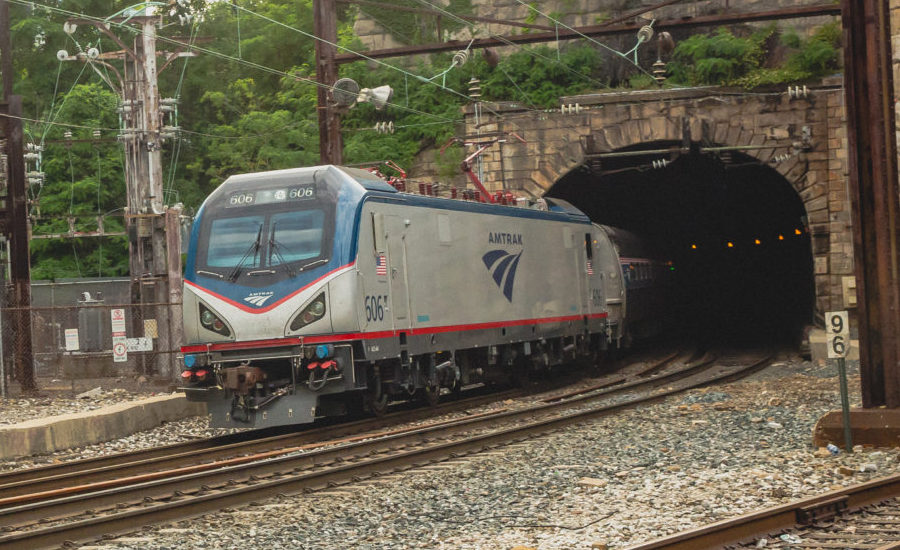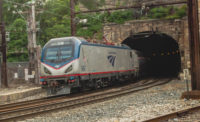As Amtrak continues to experience major declines in ridership and revenue, it is seeking $4.9 billion from Congress for fiscal 2021 for operating needs and to keep its large infrastructure and capital spending plans on schedule.
In a Nov. 23 press briefing, Stephen J. Gardner, Amtrak’s senior executive vice president, said, “We’ve got an aggressive fiscal ’21 capital program outlined." But Gardner added, “It relies on that additional funding that we have requested.”
Bill Flynn, Amtrak chief executive officer, said in a statement that if the railroad doesn't get the federal funds it has asked for, it also will have to make further cuts in rail service and its workforce.
The presumed vehicle for an Amtrak funding infusion is a major coronavirus relief and economic stimulus package. Negotiations on the legislation have seemingly stalled in recent weeks.
Amtrak's fiscal 2021 infrastructure list includes spending on the planned replacement for the Portal North Bridge in Newark, N.J. Amtrak, with New Jersey Transit, hopes to start construction in calendar 2021 on the project, Gardner said.
The plan also includes investment to advance improvements in the Hudson Tunnel between Manhattan and New Jersey
The railroad spent nearly $2 billion on capital projects in fiscal 2020, said Tony Coscia, board chairman.
Infrastructure work included a skylight replacement at Chicago Union Station, work to build a new track at Union Station in Washington, D.C., and improvements to the Baltimore and Potomac Tunnel in Baltimore, which opened in 1873.
The 2020 total also includes a record $109 million to improve accessibility at stations, including projects completed at Montgomery, W. Va., and Picayune, Miss.
It also completed installation of Positive Train Control, a system designed to regulate speed and avoid derailments and collisions.
The falloff in the number of trains and passengers has allowed Amtrak to accelerate projects. For example, Amtrak said that rail and concrete slab replacement in the B&P Tunnel, which normallly would have taken two to three years, was able to be completed in the summer just ended with extended service outages.
Gardner added, "It's a great time to invest." He said spending on infrastructure can keep people on the job and allow the railroad to recover with improved service . "We're hopeful that Congress will hear that message and allow us to keep investing in the railroad," said Gardner.
Officials also described Amtrak's results for the fiscal year that ended Sept. 30. Coscia said the railroad's revenue was down 32%, to $2.3 billion, and it posted a loss of $800 million.
Coscia said that ridership 2020 ridership was only 25% of pre-pandemic levels. Coscia added that the company is projecting some improvement in the current fiscal year, but volume still will be 37% from pre-COVID figures.
The outlook for a stimulus package is murky. In May, the House, controlled by Democrats, passed a $3-trillion relief bill.
After Republicans and the Trump administration balked at that figure, Democratic leaders came down to about $2.2 trillion before the Nov. 3 elections. Treasury Secretary Steven Mnuchin proposed $1.8 trillion, up from an earlier number.
But Senate Majority Leader Mitch McConnell (R-Ky.) has blasted the Democrats proposal as too high. McConnell has made a counter offer of just $500 billion.
Asked about the incoming Biden-Harris administration, Coscia said, "We've got lots of optimism for why this next administration will be a great partner for Amtrak and really for the traveling public." President-elect Joe Biden is well-known as a long-time Amtrak advocate and frequent passenger.
Coscia also said Amtrak had received "very encouraging signs" from the new administration, both during the campaign and during the transition period.




